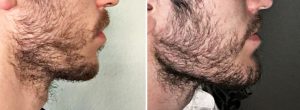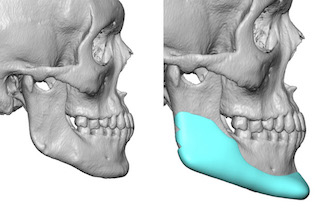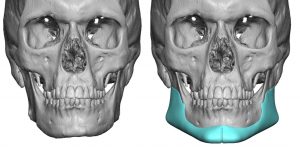Background: One of the most powerful facial reshaping procedures is aesthetic jaw reshaping surgery, specifically a custom jawline implant. By virtue of its surface area coverage and the expansion of the entire inferolateral edge of the mandible, the entire lower third of the face is changed. There is no other comparative facial bone procedure short of orthognathic surgery which is not really an aesthetic surgery.
While a custom jawline can create a significant aesthetic change, two preoperative events must take before the surgery to place it. First computer jawline imaging is needed to help determine the degree and type of lower facial change the patient desires. In other words, the target must be established. Secondly the implant design must be done to try and create an external effect that matches as close as possible to the target. While the latter is obvious there is no manual or guidelines available as to how to make the dimensions of the implant match that of the patient’s goal.
While the appeal of any type of custom facial implant is the ability to control the implant’s shape and dimensions, that is not a guarantee that such control leads to the desired outcome. Patients try to use many types of mathematical numbers, ratios and various online planning tools in the belief that their use leads to implant designs which can be made to create a specific result. The reality is that these should be viewed as guidelines not as an absolute design method. In the end it takes considerable experience to understand the response of the overlying soft tissue to an underlying implant design.



Case Highlights:
1) Before designing a custom jawline implant computer imaging is done to determine the patient’s aesthetic goals which guides the design process.
2) Besides awaiting the aesthetic outcome of the surgery from the patient’s perspective it is always interesting to compare the computer imaging predictions versus what was actually achieved.
3) While custom jawline implant designing is not an exact science, experience is helpful in understanding the ultimate external effects of various implant dimensions.
Dr. Barry Eppley
Indianapolis, Indiana




